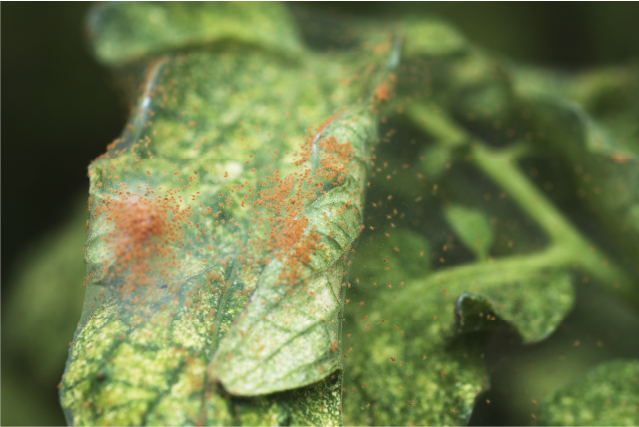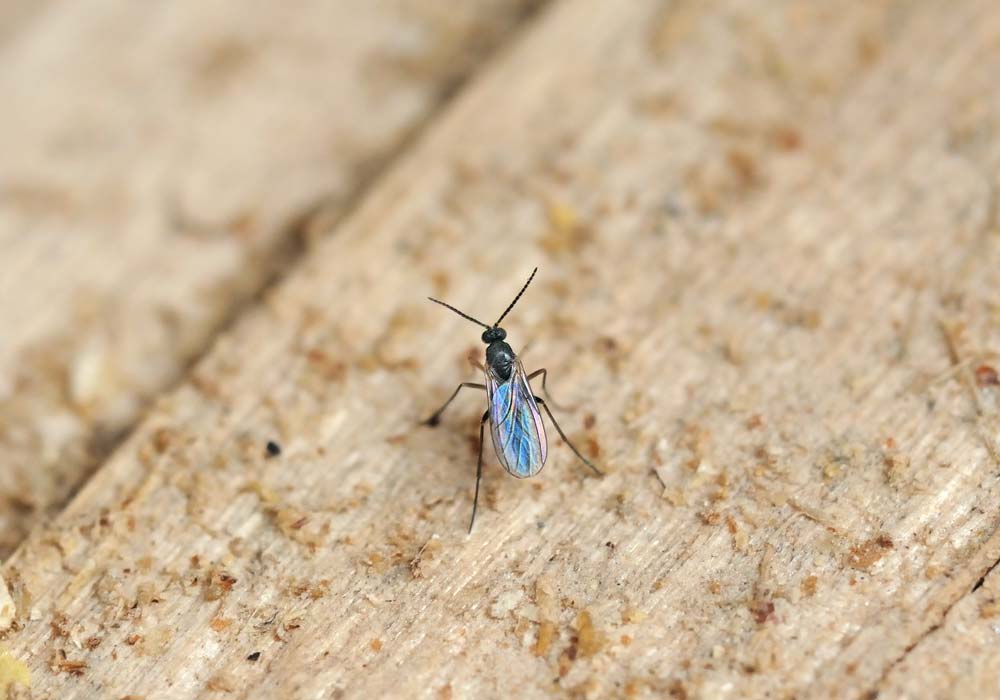What are spider mites?
Spider mites are a group of small eight-legged pests, the most common in UK greenhouses being the two spotted spider mite or red spider mite (Tetranychus urticae). Liking warmer and sheltered conditions spider mites are most commonly a problem in warm protected environments indoors or in a glasshouse.
Spider mites are particularly a problem for two reasons:
- Their feeding on plant tissue reduces the photosynthetic potential (the ability of the plant to create its energy from sunlight) which reduces the overall health of the plant.
- At high spider mite densities, the pest mite creates webbing around the growing points of the plants which is unsightly and damages the plant further.
How to identify spider mite
Without the help of a hand lens, spider mites cannot be seen with the eye. Their symptoms of an infestation can however as at high mite populations they create webbing on the plant. Once webbing is identified, visual inspection of the underside of leaves will allow two spotted spider mite to be identified, typically showing two spots one to either side of its back.

What plants attract spider mites?
There are a number of different plant types on which spider mites can thrive and become a problem. In a greenhouse growing vegetables, cucumber, tomato and pepper are common plants attacked by spider mite. For ornamental flowers the list of plants spider mite like is as diverse as Fuchsia, poinsettias, impatiens and orchids.
What are the symptoms of spider mite damage?
Spider mites cannot be seen by eye without a hand lens. To identify if spider mites are a problem, it is the symptoms which will first alert you to there being a problem. Spider mites feed on plant leaves, this feeding damage can be seen as little white spots on the green leaf surface. The higher the spider mite infestation, the greater the discolouration and specked effect visible on the leaf surface.
At higher spider mite infestations white webbing will be visible around the growing points and infested leaves of the plant. This webbing is created by the spider mite population.
What treatments can be used against spider mites?
The best approach to control spider mites is with other beneficial predatory mites.
Once a spider mite numbers have reached a point of heavy infestation and lots of webbing has been created, it is going to be a challenge to control the pest mite population and then wait for the plant to outgrow the webbing. For spider mite control prevention or early treatment is essential.
Predatory mites such as Phytoseiulus persimilis and Amblyseius cucumeris will hunt and feed on spider mites. Using Amblyseius cucumeris to control spider mites will also have other advantages to your plants, with it being a generalist predator it will also hunt and eat other pest species such as thrips.
Chemical spray treatments against spider mites are available, but it is important to remember that chemical insecticides will also harm the beneficial insect and mite species and should not be used if beneficials are going to be used.



